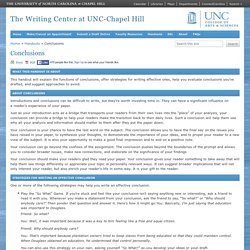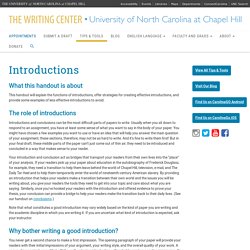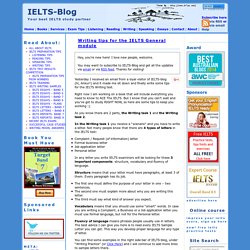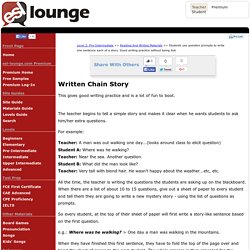

How to Write an Informative Essay. Conclusions. What this handout is about This handout will explain the functions of conclusions, offer strategies for writing effective ones, help you evaluate conclusions you’ve drafted, and suggest approaches to avoid.

About conclusions Introductions and conclusions can be difficult to write, but they’re worth investing time in. They can have a significant influence on a reader’s experience of your paper. Just as your introduction acts as a bridge that transports your readers from their own lives into the “place” of your analysis, your conclusion can provide a bridge to help your readers make the transition back to their daily lives. Your conclusion is your chance to have the last word on the subject. Your conclusion can go beyond the confines of the assignment. Your conclusion should make your readers glad they read your paper. Strategies for writing an effective conclusion One or more of the following strategies may help you write an effective conclusion. Play the “So What” Game. Introductions. What this handout is about This handout will explain the functions of introductions, offer strategies for creating effective introductions, and provide some examples of less effective introductions to avoid.

The role of introductions Introductions and conclusions can be the most difficult parts of papers to write. Usually when you sit down to respond to an assignment, you have at least some sense of what you want to say in the body of your paper. You might have chosen a few examples you want to use or have an idea that will help you answer the main question of your assignment; these sections, therefore, may not be as hard to write. Your introduction and conclusion act as bridges that transport your readers from their own lives into the “place” of your analysis. Note that what constitutes a good introduction may vary widely based on the kind of paper you are writing and the academic discipline in which you are writing it. Why bother writing a good introduction? Home - Citing Information - LibGuides at University of North Carolina Chapel Hill. The process and types of writing. Writing tips for the IELTS General module. Hey, you're new here!

I love new people, welcome. You may want to subscribe to IELTS-Blog and get all the updates via email or via RSS feed. Thanks for visiting! Yesterday I received an email from a loyal visitor of IELTS-blog (hi, Ankur!) And it made me sit down and finally write some tips for the IELTS Writing test. Right now I am working on a book that will include everything you need to know to ACE The IELTS. As you know there are 2 parts, the Writing task 1 and the Writing task 2. In the Writing task 1 you receive a “scenario” and you have to write a letter. Complaint / Request (of information) letterFormal business letterJob application letterPersonal letter In any letter you write IELTS examiners will be looking for these 3 important components: structure, vocabulary and fluency of language. Structure means that your letter must have paragraphs, at least 3 of them. Vocabulary means that you should use some “smart” words. Related posts: Writing Task 1 letter – is the order important?
Writing Rubrics. Pre-Intermediate Level: Written Chain Story. Level 2: Pre-Intermediate >> Reading And Writing Materials >> Students use question prompts to write one sentence each of a story.

Good writing practice without being dull. This gives good writing practice and is a lot of fun to boot. The teacher begins to tell a simple story and makes it clear when he wants students to ask him/her extra questions. For example: Teacher: A man was out walking one day... All the time, the teacher is writing the questions the students are asking up on the blackboard. So every student, at the top of their sheet of paper will first write a story-like sentence based on the first question. e.g.: Where was he walking? When they have finished this first sentence, they have to fold the top of the page over and hand the sheet of paper to the next student.
At the end, a class of, for example, 11 students will have produced eleven different stories. As a follow up, each student can take one version and write it up fully for a homework assignment.